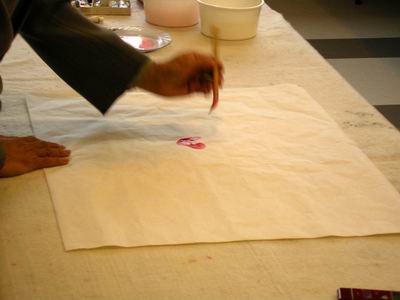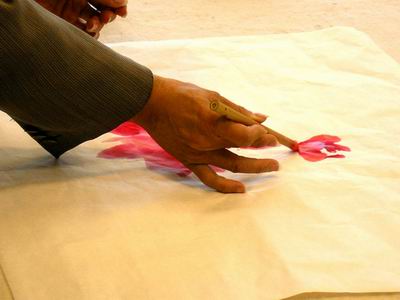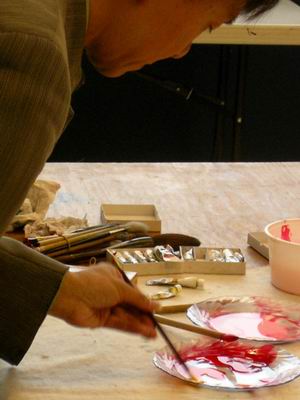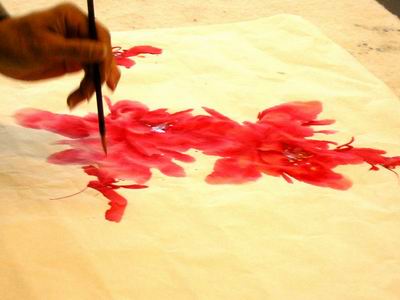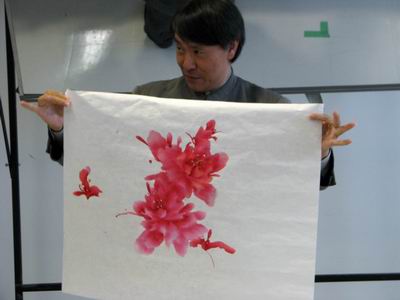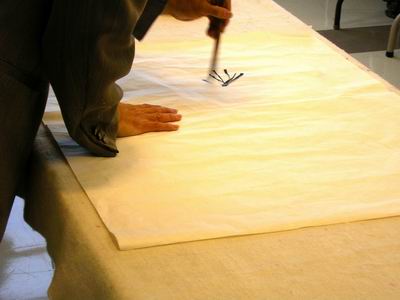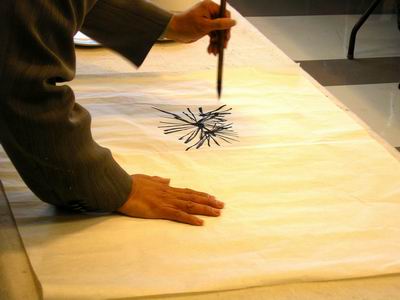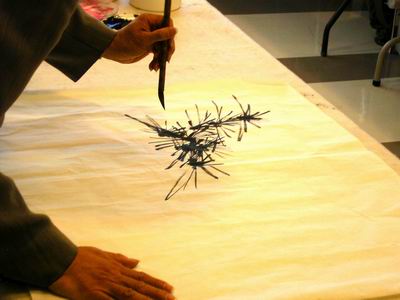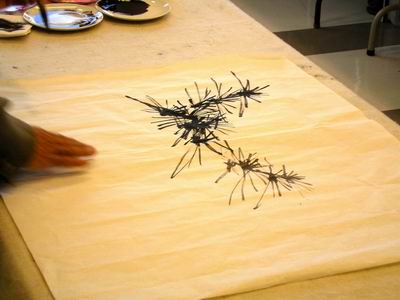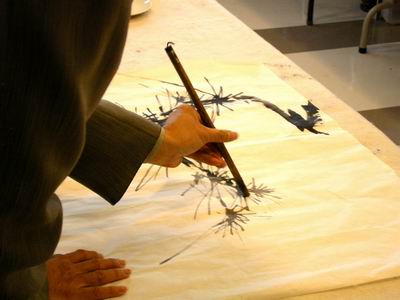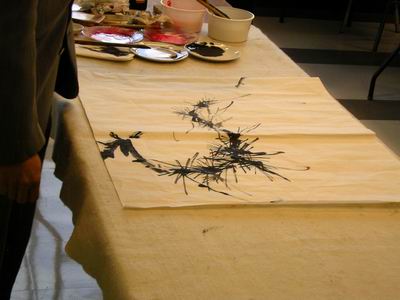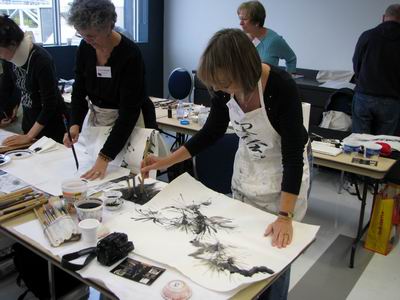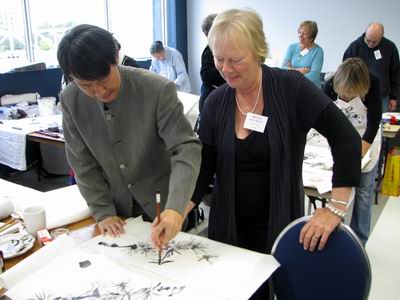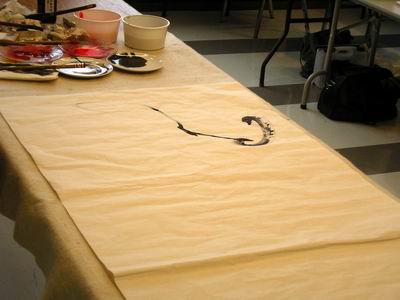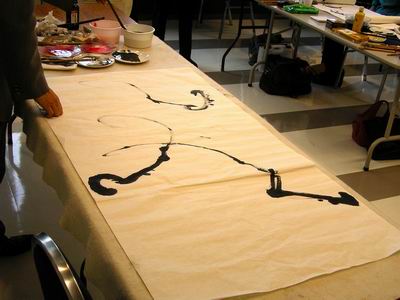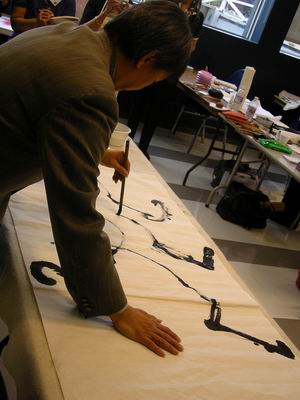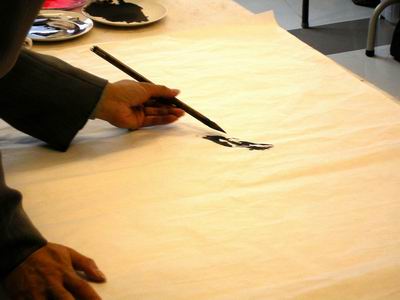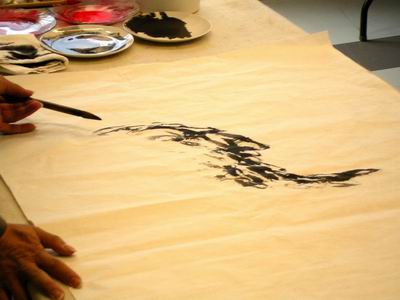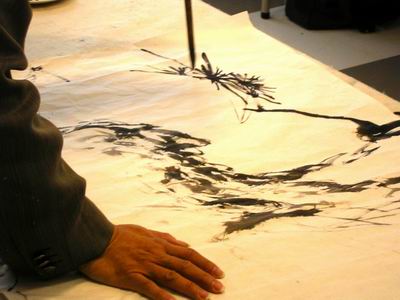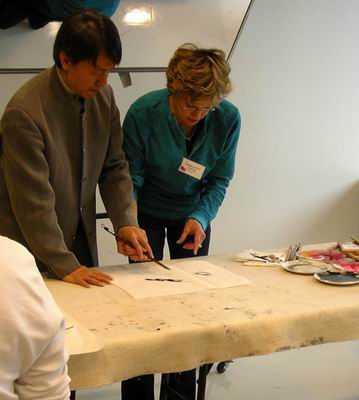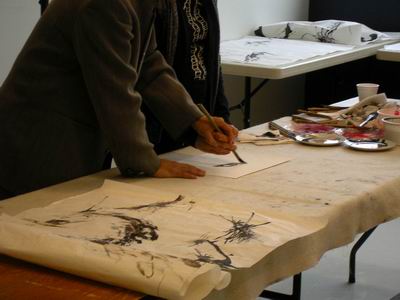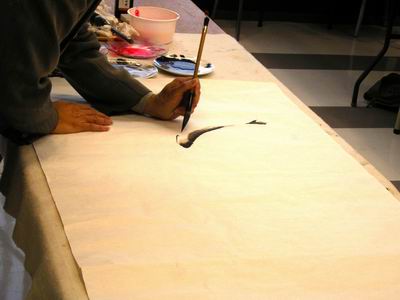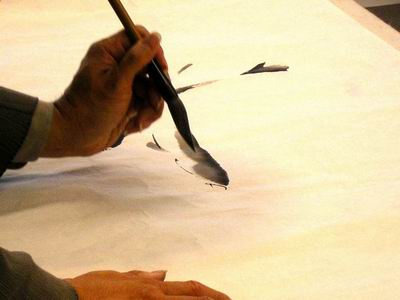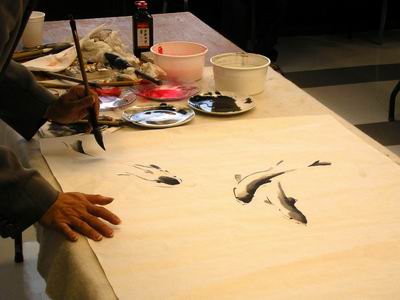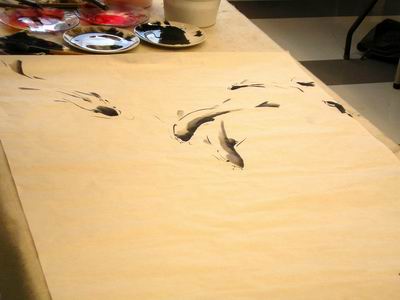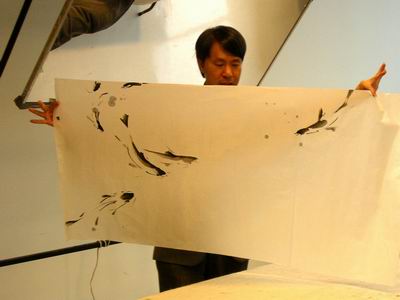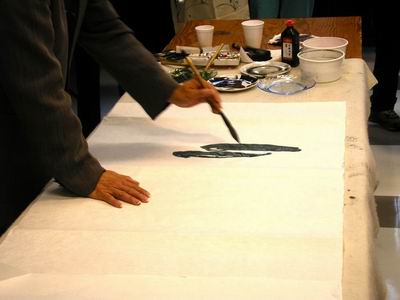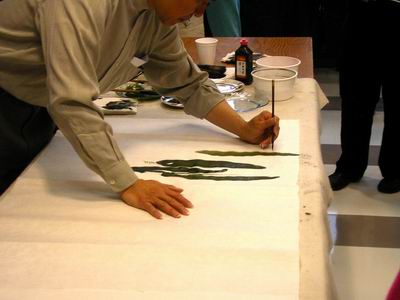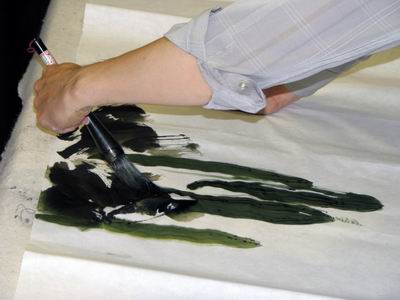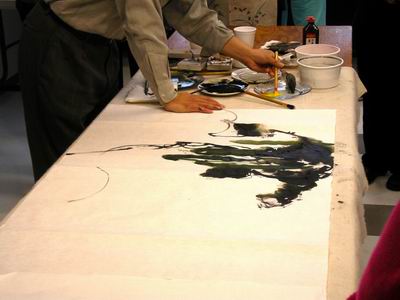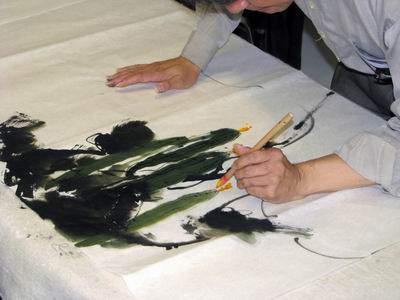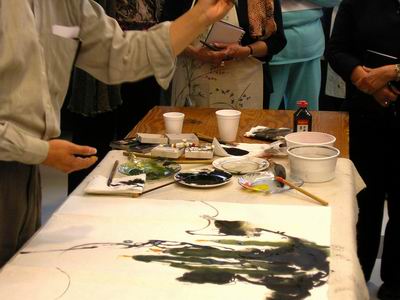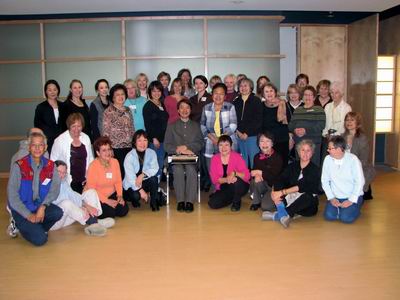Pine Trees with William Ho - October 1st and 2nd, 2009
William Ho was our painting judge in the Sumi-e for Today exhibition, a collaboration between the Sumi-e Artists of Canada and our American colleagues from the Sumi-e Society of America. William also led a workshop, which had artists exploring his expressive style in a number of subjects.
William is passionate about exploring the essential characteristics of a subject. William Ho began by painting a few petals of a peony.
William quickly added some additional petals to create the flower.
Turning to his plate of colours, he added some yellow to the brush.
He then used a fine brush to dot and splatter the yellow paint.
And it was done. Though the painting could be further developed, William wanted workshop participants to have an idea of how to quickly get to the nature of the peony.
William Ho then turned to the pine tree, a subject he would spend most of his time on.
Typically a painter creates a pointed brush and draws the needles in fast, straight lines. William used zigs and zags.
The effect created a life-like collection of pine needles.
The painting seemed a like a bunch of needles one would find in the wild.
Then William added the branch to connect the needles. Although many artists would paint the branch first, William Ho worked from the smaller set of pine needle structures to the branch they rested on.
William told the workshop at this point that he wanted us to use the same technique to create our own natural-looking pine tree branches.
Workshop participants seemed to pick up William's expressive style with a zest.
He also did some one-one-one coaching too.
William returned to work on the branches alone.
William Ho wanted to encourage a free style when painting the branches. He worked quickly as is his style, but a composition can be seen in the seemingly random brush strokes.
We could see the branches of various sizes and texture easily.
The pine tree trunk was the next part of William's workshop.
With a drier brush he captured the rough texture of the bark.
Returning to his earlier subject, William showed how to then add the branch and needles.
William asked workshop participants if they would like to have him guide their hand.
This takes more courage or perhaps trust then you might think.
Afterwards, William turned to yet another subject for the workshop: fish.
Similar to his previous painting, William worked quickly, often painting a fish in three fast strokes.
However, William seems to always have the design of the painting in his mind. The collection of fish in this painting indicates a careful composition of intersecting circular motion.
Several more fish were added.
Like the peonies earlier, suddenly it was done.
William Ho created one more work using vegetables to demonstrate his free style of painting.
These vegetables started as large, oblong, dark green structures.
William used a very large brush filled with paint.
He mixed yellow and added it to a smaller brush.
The yellow added a sharp, dynamic contrast to the green and brought out the strands at the end of the vegetables.
The vegetables were surprisingly life-like.
We all gathered for a group picture.
For William Ho, it is important to explore the essence of a subject. Workshop participants left with impressions of subjects and techniques to uncover the inner nature of any subject they paint.
You can find more information on William Ho in the links section.
